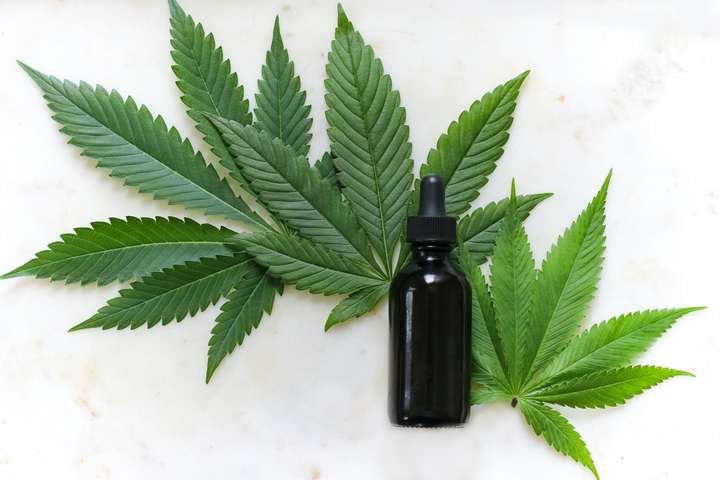CBD oil is truly one of the most popular natural medicines in the world. A recent report suggests that at least 5% of U.S. adults have tried CBD in the last several years to target health concerns that include stress, anxiety, pain, mood imbalance, and inflammation.

Hundreds of clinical studies from around the world have validated many of the health benefits touted by CBD proponents. In some studies, researchers found that over 75% of people who take CBD regularly see lowered stress levels, reduced anxiety, and improved mood. From a treatment standpoint, such results are nothing short of incredible.
CBD, or Cannabidiol, is one of over a hundred cannabinoid compounds derived from the cannabis hemp plant. The final extract can be blended into all products, from CBD oils and soft gel capsules to topical skincare products and edibles. Hemp-based CBD extracts can also be infused into teas, coffees, or sodas. You can even create healthy snack foods like CBD honey sticks made with the pure raw nectar of honeybees.
CBD is sourced from a plant like many other popular herb blends or medicinal florals. But removing and isolating it (along with other “minor cannabinoids”) requires a lot more work, especially if you want to ensure that the hemp extract oil you are taking is free from the psychoactive effects of THC, the predominant psychoactive cannabinoid found in marijuana.
How is CBD extracted from hemp?
Extraction is the initial step required to remove CBD and other pharmacological compounds like terpenes from the hemp plant.
Extractors utilize some heavy-duty and very costly equipment to extract these phytochemicals.
Two of the most common methods used are referred to as CO2 extraction and Ethanol extraction.
CO2 CBD Extraction
CO2 extraction uses carbon dioxide gas to extract the medicinal compounds from the cannabis plant. Another example of CO2 extraction is decaffeinated coffee, wherein carbon dioxide is used to remove caffeine from coffee beans without harsh chemicals.
For this extraction method, CO2 is compressed in a closed-loop extractor chamber to such high pressures that it becomes supercritical before turning into a liquid. This liquid is then forced over biomass of up to 1,000 pounds of hemp material that then strips away target cannabinoids like CBD, CBN (Cannabinol), CBG (Cannabigerol), and THC (tetrahydrocannabinol). Other compounds like terpenes, which are responsible for that sweet cannabis aroma you’re familiar with, are also extracted during this process.
Ethanol CBD extraction
Ethanol extraction works differently and involves using food-grade alcohol derived from sugar cane. In its more advanced iteration, the ethanol process first requires that hemp is flash frozen to sub-zero temperatures of around -20 degrees Fahrenheit for 24 – 48 hours. The frozen plant material is soaked in the sugar cane alcohol, loaded into a centrifuge, and spun at extremely high speeds to remove compounds of varying densities. Because the final mixture will still contain some sugar cane alcohol, it is then dropped through a falling film heated column to remove all remaining alcohol by evaporation.
The outcome of either of these extraction methods is a viscous, molasses-like material that is light gold to deep amber. Because terpenes are usually present in this raw material, the extract will have a strong hemp aroma.
The final raw material extracts contain anywhere from 70% to 90% CBD.
Filtration and Purification
In most cases, this raw material contains a full spectrum of cannabinoids and terpenes, along with other plant matter such as flavonoids, lipids, and chlorophyll.
To further refine the raw material, which may look murky or hazy, a process known as winterization is used to remove unwanted compounds like waxes, fats, lipids, and chlorophyll, leaving behind only the active pharmacological components of the hemp plant.

At this point, the raw material can be consumed or blended into products, but it can also go through additional processes that refine and further isolate specific components.
Using distillation and chromatography, specific compounds like THC can be removed from the material to ensure it complies with federal, state, and local laws.
Extractors can even take things a step further to isolate cannabinoids from the mixture. So effective are these refinement processes that CBD itself can be extracted to a single-molecule form called an isolate. This isolate extraction process results in a superfine, microcrystalline powder that is pharmaceutical grade (i.e., it contains over 99% pure cannabidiol with all other cannabinoids and terpenes wholly removed).
Types of CBD
While final hemp extracts come in many forms, the most common types of CBD left following extraction, winterization, chromatography, and filtration include full spectrum CBD, broad-spectrum CBD, and pure CBD isolate.
These three types of CBD can be blended into just about any kind of product.
Full spectrum CBD products contain medicinal compounds like terpenes and cannabinoids like CBD, CBN, CBG, CBC, and THC. According to US federal law, full spectrum CBD sold legally over the counter must have less than 0.3% THC.
Broad spectrum blends are like a full spectrum with one key exception: The THC has been removed from broad spectrum CBD products and is virtually undetectable in lab tests.
Pure isolate CBD products are blended with a super-concentrated isolate powder. Because isolates do not contain terpenes, they are flavorless and have virtually no hemp aroma. Isolates are not amber or gold colored like full spectrum or broad spectrum extracts. Instead, CBD isolates are a white, microcrystalline powder.
Which CBD extraction method should you choose?
The debate on which CBD extraction method is best is ongoing.
Ultimately, CO2 and ethanol extraction produce high-quality hemp extracts with pharmacologically effective CBD, minor cannabinoids, and terpenes.
Instead of focusing on the extraction method, consider the type of CBD (full spectrum, broad-spectrum, or isolate) and how much CBD to take when choosing the right product.
CBD can be taken orally, sublingually, vaped, and applied topically.
All four ways have been shown to benefit users who experience a wide variety of health and wellness concerns.





